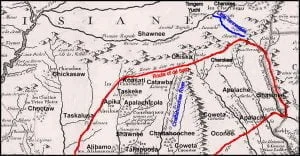Archaeological Research in the Southern Highlands
Between about 1585 and 1600 AD, something catastrophic happened in the Southern Highlands. The effects are most notable in northwest Georgia, southeast Tennessee and the northwestern North Carolina Mountains. A native population remained in the heartland of the Apalache “kingdom” in the north-central and northeast mountains of Georgia. In fact the large town of Ustanoli on an island in the Tugaloo River was not sacked and burned until after 1700. It was eventually replaced by a Cherokee hamlet. All mound building stopped. Some of the largest indigenous towns north of Mexico were suddenly abandoned. Archeologists working in northwestern Georgia found … Read more

